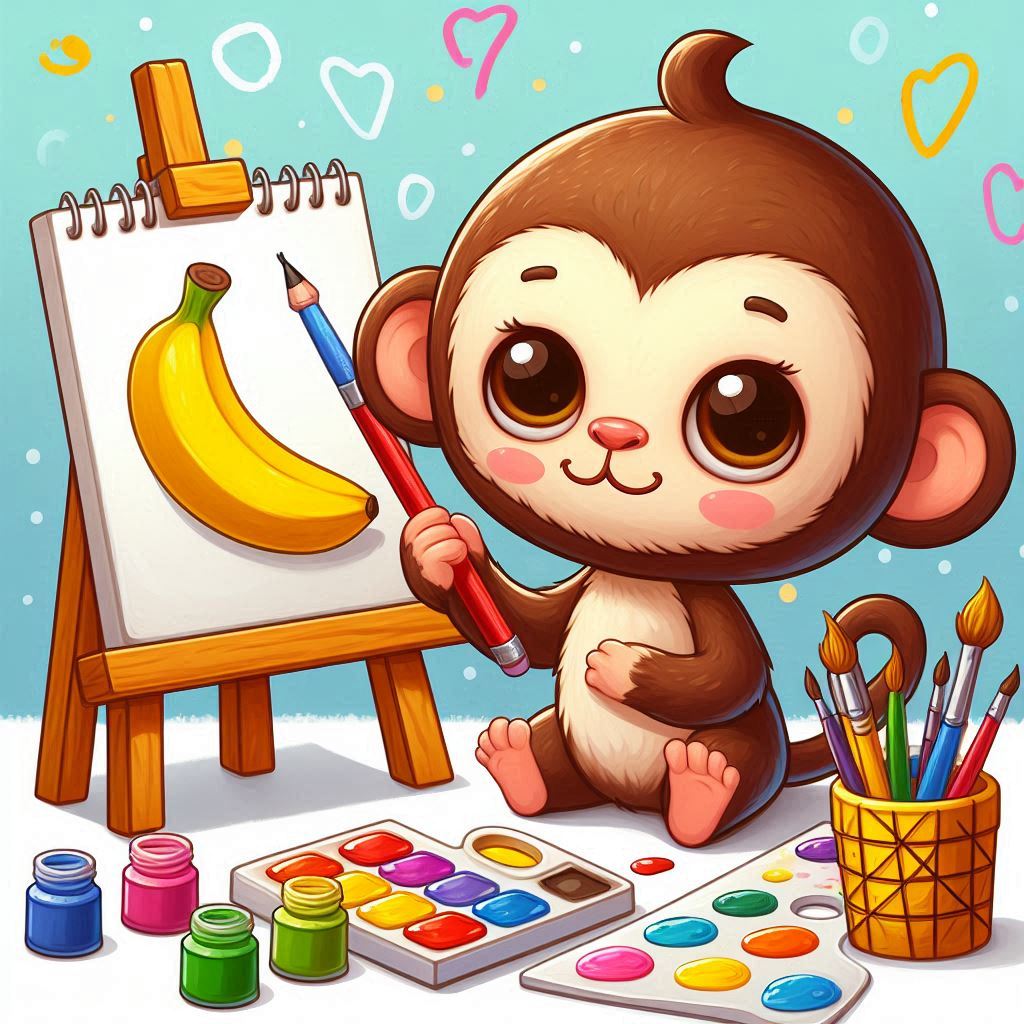Monkeys, with their expressive faces, energetic movements, and captivating personalities, have long been a favorite subject for artists. Drawing:uqp7yroofp0= monkey not only challenges your artistic skills but also provides a fulfilling creative experience. Whether you’re capturing their playful antics or their more thoughtful expressions, this guide will walk you through the essential steps and techniques for drawing stunning, lifelike monkeys.
In this comprehensive guide, we’ll explore everything from understanding monkey anatomy to mastering key features like their faces, hands, and feet. So, grab your sketchpad and pencils, and let’s begin your journey to becoming a skilled monkey artist.
1. Understanding Drawing:uqp7yroofp0= Monkey
Before diving into drawing, it’s essential to have a clear understanding of monkey anatomy. Monkeys are unique in their form, possessing elongated limbs, flexible tails, and highly expressive faces. Here are some anatomical elements to keep in mind:
- Face: Monkeys have pronounced facial features like large eyes, rounded foreheads, and expressive mouths. Their wide range of expressions is what makes them so fascinating to draw.
- Limbs: Their long arms and legs allow them to swing from branches, which means you’ll often be drawing dynamic, action-packed poses.
- Tail: Many species have long, prehensile tails used for balance and grasping objects, which can add an extra element of movement to your drawings.
Study references or photographs of different species to get a feel for the variations in anatomy across the monkey family.
2. The Artistic Appeal of Monkeys

Why do so many artists enjoy drawing monkeys? Their appeal lies in their energy and expressiveness. From cheeky grins to pensive gazes, monkeys can convey a range of emotions, making them interesting subjects for portraiture and action scenes alike. Their dynamic movements also challenge artists to experiment with different poses, giving you the chance to improve your ability to depict action and motion.
3. Essential Tools for Drawing:uqp7yroofp0= Monkey
To achieve the best results, having the right tools is key. Here’s what you’ll need:
- Pencils: Use a variety of pencils ranging from hard (H) to soft (B) to capture different levels of shading and detail.
- Eraser: A kneaded eraser is great for gently lifting graphite from the paper without damaging your work.
- Blending Stump: This tool helps blend pencil marks for smoother shading, essential for rendering fur.
- Paper: Choose paper with a smooth texture for precise lines, or opt for textured paper if you want to add depth to your drawing with shading.
4. Step-by-Step Guide to Drawing:uqp7yroofp0= Monkey
Step 1: Start with Basic Shapes
Begin by sketching the basic structure of the monkey using simple shapes like circles and ovals for the head, torso, and limbs. This helps establish proportion and pose.
Step 2: Refine the Head and Facial Features
Focus on the face. Add large, expressive eyes, a defined nose, and a mouth. Remember, monkeys have distinctive facial expressions, so take your time capturing their emotional depth.
Step 3: Sketch the Limbs and Tail
Draw the arms, legs, and tail with attention to their length and flexibility. Use reference images to capture their natural positions.
Step 4: Add Details to the Hands and Feet
Monkeys have dexterous hands and feet, with long fingers and toes. Pay special attention to these features as they’re often a focal point in monkey drawings.
Step 5: Add Fur and Texture
Use short, quick pencil strokes to add fur, making sure to follow the contours of the monkey’s body for a realistic effect. Vary the density of the fur in different areas for depth.
Step 6: Shading and Depth
Shading is crucial to give your drawing a three-dimensional feel. Add shadows to areas like under the chin, the limbs, and around the eyes to create depth.
Step 7: Final Touches
Review your drawing, making any necessary adjustments to the proportions or details. Darken the areas that need more contrast, and use a blending stump to smooth out any rough shading.
5. Avoiding Common Mistakes
- Incorrect Proportions: Monkeys have unique body proportions. Avoid making their heads too large or their limbs too short. Regularly check your reference images for accuracy.
- Overcomplicating the Fur: Don’t get bogged down by trying to draw every hair. Instead, focus on capturing the overall texture and flow of the fur.
- Neglecting Expression: Monkeys are expressive animals, so make sure to capture their emotions in your drawing. A lifeless expression can make the drawing feel flat.
6. Enhancing Your Drawing with Backgrounds
Once your monkey drawing is complete, consider adding a background to give it context. Here are a few ideas:
- Jungle Scene: Place your monkey in its natural habitat, swinging through trees or sitting on a branch.
- Playful Setting: Monkeys are known for their playful behavior, so you could depict them interacting with other animals or exploring their environment.
- Abstract Background: If you want the focus to stay on the monkey, use a simple, abstract background with light shading or soft colors.
7. Drawing Inspiration from Famous Monkey Artworks
Many artists have drawn inspiration from monkeys throughout history. For example:
- Albrecht Dürer’s “The Small Clawed Monkey”: This iconic piece showcases the detailed and lifelike rendering of a monkey, emphasizing the importance of realism in animal portraits.
- Contemporary Digital Art: Modern artists often use monkeys as subjects in digital illustrations, blending realism with fantastical elements.
Studying these artworks can inspire your own creative approach, whether you want to stick to realism or experiment with more stylized techniques.
8. Final Words
Drawing:uqp7yroofp0= monkeys is both a challenging and rewarding artistic pursuit. By focusing on anatomy, expression, and texture, you can create compelling and lifelike depictions of these fascinating creatures. Remember, practice is key—don’t be discouraged if your first attempts aren’t perfect. Keep refining your technique, and soon you’ll be able to capture the unique spirit of monkeys in your artwork with stunning results.
FAQs
- What tools do I need to draw a monkey?
You’ll need pencils, erasers, blending tools, and high-quality paper to start. - How can I improve my monkey drawings?
Focus on understanding anatomy, practicing shading techniques, and studying real-life references for accuracy. - What are common mistakes to avoid?
Watch out for incorrect proportions, over-complicated fur rendering, and lifeless expressions.
Happy drawing!
- Empower Your Health: Order Home Lab Tests Online To Enhance Personal Wellness
- 5 Manual Pipeline Tasks You Should Automate to Close Deals 30% Faster
- What does 67 mean: From Slang to Meme Explained
- How to Install FreeDoor 2.4.6.8 – Complete Setup & Configuration Guide
- Smart Data Collection Strategies in Data Science for High-Quality Insights






